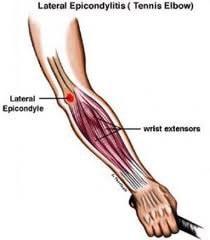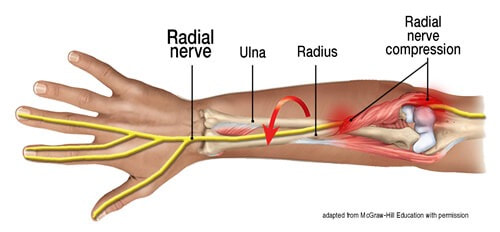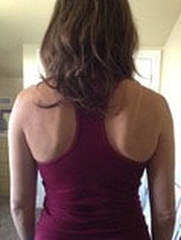Three Ways To Decrease Tennis Elbow Pain
Feb 08, 2018
Pain on the outside of the elbow is classically called “tennis elbow” or tendinitis, although people who don’t play tennis can also have this pain from grip-heavy or repetitive activity. There are also many structures that can cause this same pain, outside of the usual tendinitis.
Tendinitis is thought to be caused by increased inflammation due repetitive stress in the area and micro-tears to the muscle. It is acute, meaning it just happened. However, many folks that we see have had symptoms for months (sometimes years!!) and so the process is different and chronic. We call this tendinosis. There is no longer acute inflammation or swelling, rather long term changes to the tissues in that area from improper healing and continuous repetitive trauma.
The area that is irritated to cause the pain at the outside of the elbow is called the extensor tendon. That is, the common tendon where all of the smaller forearm muscles that extend the wrist, join at the elbow.
Often times, players who are playing frequently throughout the week without proper mobility and recovery plans will present with this issue. Over-gripping the racket is also another major cause.
If the muscles and therefore the tendon or irritated, a great place to start for self-care would be to perform the forearm release (seen below).
Doing this for two minutes, 1-2x/day, can have a positive impact on the pain you feel.

So while many tennis players have pain at their elbow, only a fraction will actually have “tendinitis.”
Another tissue that is often the culprit is the nervous tissue. Nerves course throughout our entire body for muscle function, sensation, etc. Irritation of the nerve, from repetitive activities or rubbing against another structure can send pain signals to the same area. However, treating the muscle in this case will not clear up the symptoms.
The major nerve that runs by the outside of the elbow is called the radial nerve. Muscles nearby are commonly overused in tennis and can be the cause of the symptoms. Irritation of this nerve can also begin at the neck, but that is a discussion for another time!
We often see players who are changing their grip or adding more top spin to their balls tend to have more issues with nerve irritation.

The best way to address the radial nerve irritation is a radial nerve glide (see video below). Try 15 of these before a lesson or match to improve the mobility of the nerve and decrease the pain. With nerve glides, keep the tension that you create 5/10 tension/pulling or less to avoid extra irritation!
Try 15 of these before a lesson or match to improve the mobility of the nerve and decrease the pain. With nerve glides, keep the tension that you create 5/10 tension/pulling or less to avoid extra irritation!
While both of these strategies above are a great way to decrease your pain, the best way to keep it from happening again is to address the shoulder. Shoulder weakness changes how your arm (elbow and wrist) move through space. With tennis players, overhead strokes and serving can be particularly irritating if proper shoulder position, strength and control are not achieved.
Does your back look like this? Notice how the inside edges of her shoulder blade are prominent? Not ideal. That demonstrates weakness in muscles that are essential for overhead movement.

You can begin to address this weakness and shoulder position with a simple and effective exercise called the single arm punch out. It strengthens a muscle called the serratus anterior to help normalize scapular position. Try 2 sets of 15 reps per side, 3x/week. This is a great warm up on the court or at the gym!
Summary:
- Elbow pain may be caused by different structures- muscle, nerve, tendon.
- Over-gripping, lack of recovery plan and learning new skills can cause issues to pop up throughout tennis season
- Try these self-mobilizations and exercises yourself. Can’t quite figure it out? Give us a call!
Thanks for reading,
Athletes' Potential
Let us help you figure out to live your best active life today!
Remember, Movement is Medicine!

